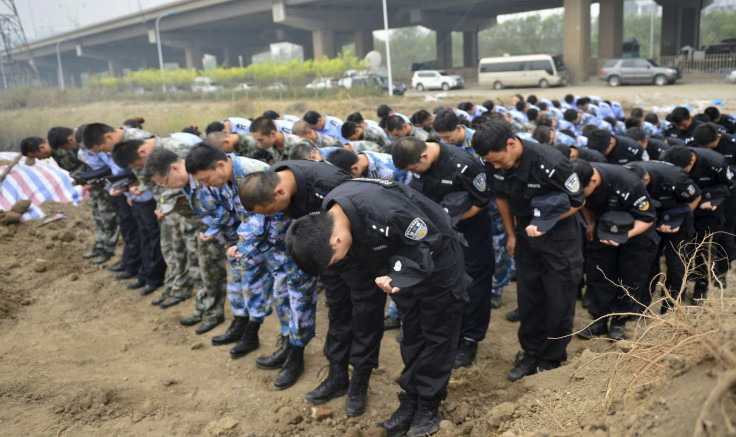China aims at containing toxic sodium cyanide released after Tianjin blast

The huge amount of toxic sodium cyanide present at the site of blasts that took place on August 12 in north eastern China has led authorities to send rescue teams to ensure it doesn’t contaminate the environment. Authorities have deployed troops that have been combing the area to contain the possible release of the toxic chemical due to the blast.
The blasts at the Tianjin port, one of world’s biggest ports, killed 114 people and injured 700 more. The explosions were so powerful that it could be detected on earthquake sensors, according to The Wall Street Journal. The devastation have raised fear of releasing a prodigious amount of toxic chemicals into the environment. Reportedly around 700 tonnes were stored at the warehouse which was blown off during the blasts.
Sodium cyanide is most often used for extracting gold and other precious metals, as well as for chemical production. According to the U.S. National Institute for Occupational Safety and Health , hydrogen cyanide gas can be released from it, which, in turn, can interfere with the ability of the body to intake oxygen.
Tianjin Vice Mayor He Shushan said that “a very complicated and difficult” clean-up was started amid confusions created by the 18,000 shipping containers present at the site and fears that the substance can spread more easily due to the rains. He also said that to prevent contamination due to leakage, sand and earth barriers have been built around the 100,000 square-metre core area by the authorities.
Authorities initially said that they have taken the necessary steps to prevent the chemical getting mixed with water. The next day, they said that even though the presence of chemical at the site has been detected after recognising its existence in water, the exact amount of it was still unknown.
Premier Li Keqiang met with officials, injured workers, residents and rescue workers on Sunday and promised a thorough investigation into the matter and bring to justice those who are responsible for the blast.
Contact the writer at feedback@ibtimes.com.au, or let us know what you think below.





















